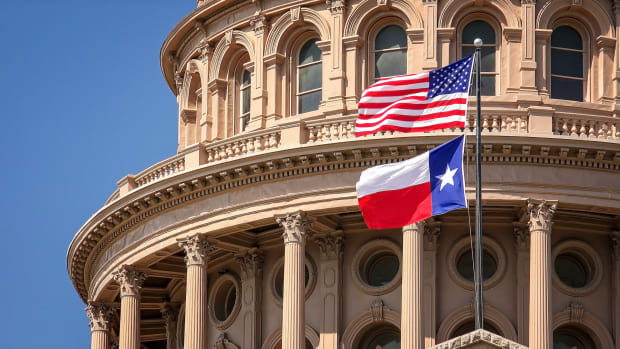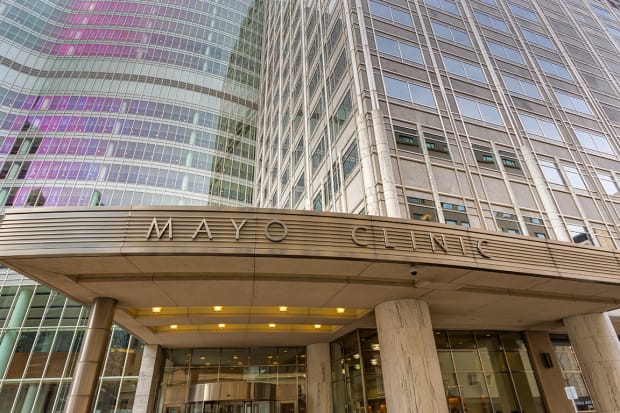Enrollment in the federal health insurance marketplace reached a record high this year. The increase was likely due to increased premium tax credits for the coverage and extended eligibility that was part of the American Rescue Plan signed by President Joe Biden in 2021, according to the Urban Institute.
But the tax credits are due to expire at the end of this year. The Urban Institute says that if the enhancements are not extended, 3.1 million more people will be uninsured in 2023, and enrollees who remain will spend hundreds of dollars more per person on premiums.
And premiums are just the start. Many U.S. households do not have enough money available to cover the cost of a typical deductible in a private health plan, according to an analysis by the Kaiser Family Foundation. About a third of single-person households with private insurance in 2019 could not pay a $2,000 bill, and half could not pay a $6,000 bill, according to KFF.
And that leads to medical debt. Nearly 1 in 10 adults – or roughly 23 million people – owe medical debt, according to KFF. This includes 11 million who owe more than $2,000 and 3 million people who owe more than $10,000.
The costs are eating up Americans’ paychecks. Premium contributions and deductibles totaled 11.6% of median income in 2020, up from 9.1% in 2010, according the Commonwealth Fund.
Americans spend more on health care than any other nation by far—$12,318 per capita, according to the OECD; that’s $4,935 more than the next most expensive country, Germany, which spends $7,383 per capita.
Health care affordability isn’t just an issue for those who pay healthcare on their own or through the marketplace, it’s becoming a burden even to large employers who provide the benefit to their workers. A 2021 survey by Kaiser Family Foundation found that overall, large employers find healthcare costs excessive and that that the cost of providing health benefits to employees will become unsustainable in the next five to 10 years. Some 85% of respondents believe that there will need to be greater government roles in providing coverage and containing costs. One respondent noted in a follow-up interview, “if it’s not the government stepping in, who would it be?”
This list shows the average cost of health insurance in each of the 50 states, ranging from $831 a month in West Virginia, the most expensive state, to $309 a month in the cheapest state.
The figures come from Value Penguin, which aggregated premium rates from the Centers for Medicare & Medicaid Services site. Using the rates and premiums for each plan, averages were calculated for a variety of variables such as metal tier, family size or county. Average costs per state are calculated from a silver plan for 40-year-old.

1. West Virginia
- Monthly cost: $831
- Annual cost: $9,972
- Difference from national average: +53.72%
A number of factors contribute to the reason some states cost more than others. One of them is called "silver loading," where insurers raise the premiums they charge for silver plans to offset the now-uncompensated cost of providing cost-sharing reductions. You can read more about silver loading at Brookings.
West Virginia is one of three states that doesn't allow silver loading, and this is one of the reasons premiums are high here, as explained by the West Virginia Center on Budget and Policy. They also show how much more West Virginians will pay if the American Rescue Plan tax credits are allowed to expire at the end of the year.

2. South Dakota
- Monthly cost: $811
- Annual cost: $9,732
- Difference from national average: +50.02%

3. Wyoming
- Monthly cost: $764
- Annual cost: $9,168
- Difference from national average: +41.32%
Andrew Farkas/Wikipedia

4. Vermont
- Monthly cost: $760
- Annual cost: $9,120
- Difference from national average: +40.58%
Shutterstock

5. Louisiana
- Monthly cost: $728
- Annual cost: $8,736
- Difference from national average: +34.67%

6. Alaska
- Monthly cost: $715
- Annual cost: $8,580
- Difference from national average: +32.26%

7. New York
- Monthly cost: $713
- Annual cost: $8,556
- Difference from national average: +31.89%

8. Nebraska
- Monthly cost: $685
- Annual cost: $8,220
- Difference from national average: +26.71%

9. Oklahoma
- Monthly cost: $635
- Annual cost: $7,620
- Difference from national average: +17.46%

10. North Carolina
- Monthly cost: $634
- Annual cost: $7,608
- Difference from national average: +17.28%

11. Missouri
- Monthly cost: $620
- Annual cost: $7,440
- Difference from national average: +14.69%

12. Florida
- Monthly cost: $585
- Annual cost: $7,020
- Difference from national average: +8.21%

13. Alabama
- Monthly cost: $579
- Annual cost: $6,948
- Difference from national average: +7.1%

14. Nevada
- Monthly cost: $578
- Annual cost: $6,936
- Difference from national average: +6.92%

15. Arizona
- Monthly cost: $577
- Annual cost: $6,924
- Difference from national average: +6.73%

16. Texas
- Monthly cost: $575
- Annual cost: $6,900
- Difference from national average: +6.36%

17. Connecticut
- Monthly cost: $564
- Annual cost: $6,768
- Difference from national average: +4.33%

18. Utah
- Monthly cost: $563
- Annual cost: $6,756
- Difference from national average: +4.14%

19. Illinois
- Monthly cost: $556
- Annual cost: $6,672
- Difference from national average: +2.85%
Shutterstock

20. Delaware
- Monthly cost: $555
- Annual cost: $6,660
- Difference from national average: +2.66%

21. California
- Monthly cost: $537
- Annual cost: $6,444
- Difference from national average: -0.67%

21. New Jersey
- Monthly cost: $537
- Annual cost: $6,444
- Difference from national average: -0.67%

23. Massachusetts
- Monthly cost: $535
- Annual cost: $6,420
- Difference from national average: -1.04%
Sean Pavone/Shutterstock

24. Kansas
- Monthly cost: $534
- Annual cost: $6,408
- Difference from national average: -1.22%

25. Iowa
- Monthly cost: $533
- Annual cost: $6,396
- Difference from national average: -1.41%

26. North Dakota
- Monthly cost: $524
- Annual cost: $6,288
- Difference from national average: -3.07%
Ken Wolter / Shutterstock

27. Idaho
- Monthly cost: $516
- Annual cost: $6,192
- Difference from national average: -4.55%
Checubus / Shutterstock

28. Wisconsin
- Monthly cost: $514
- Annual cost: $6,168
- Difference from national average: -4.92%

29. Virginia
- Monthly cost: $512
- Annual cost: $6,144
- Difference from national average: -5.29%

30. Mississippi
- Monthly cost: $511
- Annual cost: $6,132
- Difference from national average: -5.48%
Shutterstock

31. Tennessee
- Monthly cost: $508
- Annual cost: $6,096
- Difference from national average: -6.03%

32. Pennsylvania
- Monthly cost: $498
- Annual cost: $5,976
- Difference from national average: -7.88%
Shutterstock

33. Hawaii
- Monthly cost: $490
- Annual cost: $5,880
- Difference from national average: -9.36%
Shutterstock

33. Ohio
- Monthly cost: $490
- Annual cost: $5,880
- Difference from national average: -9.36%
aceshot1 / Shutterstock

35. New Mexico
- Monthly cost: $480
- Annual cost: $5,760
- Difference from national average: -11.21%
Raisa Nastukova / Shutterstock

36. Montana
- Monthly cost: $479
- Annual cost: $5,748
- Difference from national average: -11.39%

37. Kentucky
- Monthly cost: $478
- Annual cost: $5,736
- Difference from national average: -11.58%

38. Oregon
- Monthly cost: $475
- Annual cost: $5,700
- Difference from national average: -12.13%

39. Maine
- Monthly cost: $465
- Annual cost: $5,580
- Difference from national average: -13.98%
Shutterstock

40. Washington
- Monthly cost: $443
- Annual cost: $5,316
- Difference from national average: -18.05%
Shutterstock

41. South Carolina
- Monthly cost: $436
- Annual cost: $5,232
- Difference from national average: -19.35%
Shutterstock

42. Indiana
- Monthly cost: $433
- Annual cost: $5,196
- Difference from national average: -19.90%
Shutterstock

43. Arkansas
- Monthly cost: $419
- Annual cost: $5,028
- Difference from national average: -22.49%
RozenskiP / Shutterstock

44. Rhode Island
- Monthly cost: $413
- Annual cost: $4,956
- Difference from national average: -23.60%

45. Michigan
- Monthly cost: $410
- Annual cost: $4,920
- Difference from national average: -24.16%

46. Colorado
- Monthly cost: $409
- Annual cost: $4,908
- Difference from national average: -24.34%

47. Minnesota
- Monthly cost: $389
- Annual cost: $4,668
- Difference from national average: -28.04%
Ken Wolter / Shutterstock

48. Maryland
- Monthly cost: $365
- Annual cost: $4,380
- Difference from national average: -32.48%
Shutterstock

49. New Hampshire
- Monthly cost: $360
- Annual cost: $4,320
- Difference from national average: -33.41%

50. Georgia
- Monthly cost: $309
- Annual cost: $3,708
- Difference from national average: -42.84%
See this list at ValuePenguin.com.
Shutterstock







